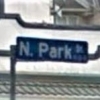It’s almost as if Aryze has inside bets on who can come up with the worst design that the city will approve. This one may take the frickin cake. I’ll give Aryze credit for not being cookie cutter, but nearly all the residential bunker designs turn their back on the street as if disgusted by the surrounding world. There are many wonderful streets and neighbourhoods in Victoria, but Aryze Bomb Shelters result in desolate dead zones. Why do folks love walking through Fairfield - in part because you can see and talk to friendly people puttering in their front garden, chilling in the front yard.. you can appreciate the architecture, get glimpses into gorgeous houses.. often the front door is left open.. it just feels like a people place, not a walled fortress. Jeez, I’ll probably have to rant on more about what this means for Telus Ocean Submarine in that thread!

Victoria Construction Rumour Thread + Info on Projects With No Dedicated Thread
#2381

Posted 03 June 2020 - 07:19 PM
It’s almost as if Aryze has inside bets on who can come up with the worst design that the city will approve. This one may take the frickin cake. I’ll give Aryze credit for not being cookie cutter, but nearly all the residential bunker designs turn their back on the street as if disgusted by the surrounding world. There are many wonderful streets and neighbourhoods in Victoria, but Aryze Bomb Shelters result in desolate dead zones. Why do folks love walking through Fairfield - in part because you can see and talk to friendly people puttering in their front garden, chilling in the front yard.. you can appreciate the architecture, get glimpses into gorgeous houses.. often the front door is left open.. it just feels like a people place, not a walled fortress. Jeez, I’ll probably have to rant on more about what this means for Telus Ocean Submarine in that thread!
- RFS likes this
#2382

Posted 04 June 2020 - 01:18 PM
OMFG..not meant to be taken personally PPPdev, but that’s horrific! Even worse is the street view context with surrounding homes in the PDF.
It’s almost as if Aryze has inside bets on who can come up with the worst design that the city will approve. This one may take the frickin cake. I’ll give Aryze credit for not being cookie cutter, but nearly all the residential bunker designs turn their back on the street as if disgusted by the surrounding world. There are many wonderful streets and neighbourhoods in Victoria, but Aryze Bomb Shelters result in desolate dead zones. Why do folks love walking through Fairfield - in part because you can see and talk to friendly people puttering in their front garden, chilling in the front yard.. you can appreciate the architecture, get glimpses into gorgeous houses.. often the front door is left open.. it just feels like a people place, not a walled fortress. Jeez, I’ll probably have to rant on more about what this means for Telus Ocean Submarine in that thread!.
https://www.darcyjones.com/about
send through your qualifications and awards ![]()
- Matt R. likes this
#2383

Posted 04 June 2020 - 06:37 PM
It’s a good thing non-award winning architects are still allowed an opinion!
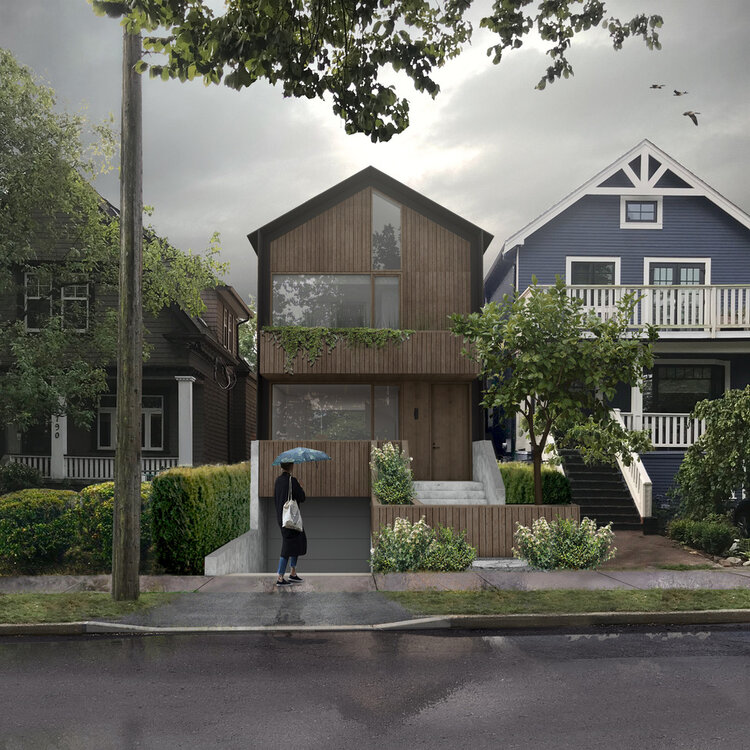
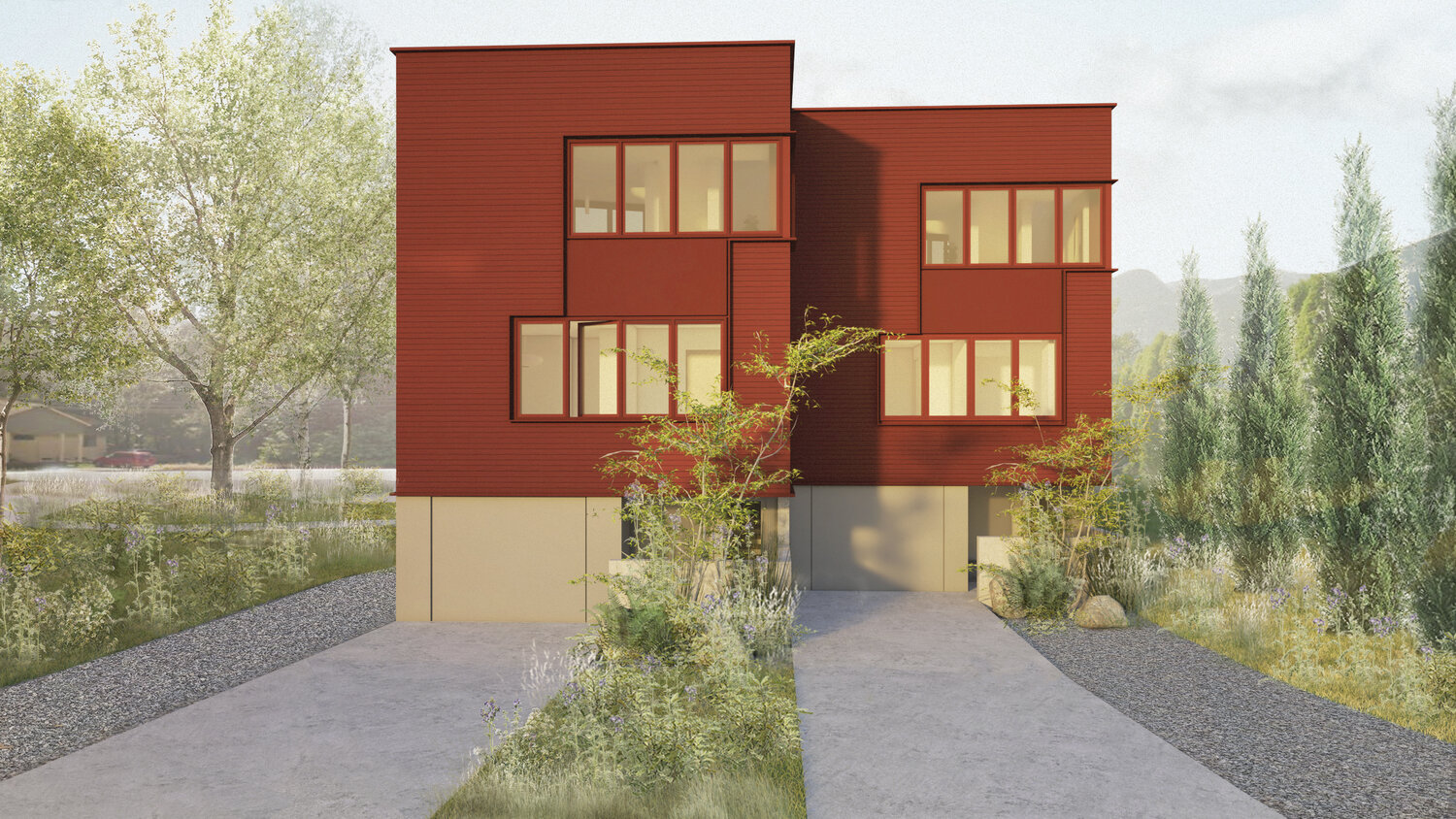

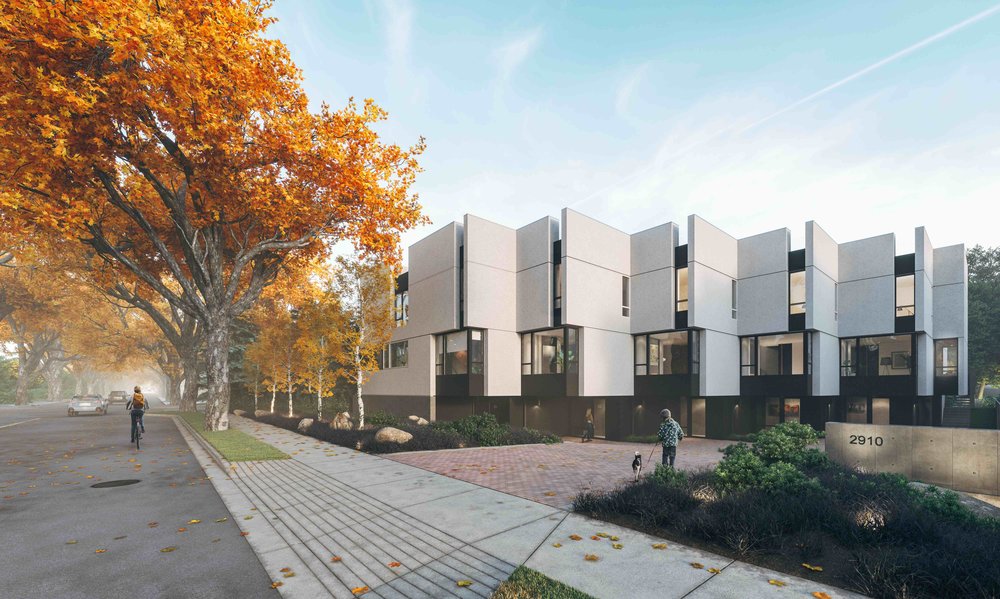
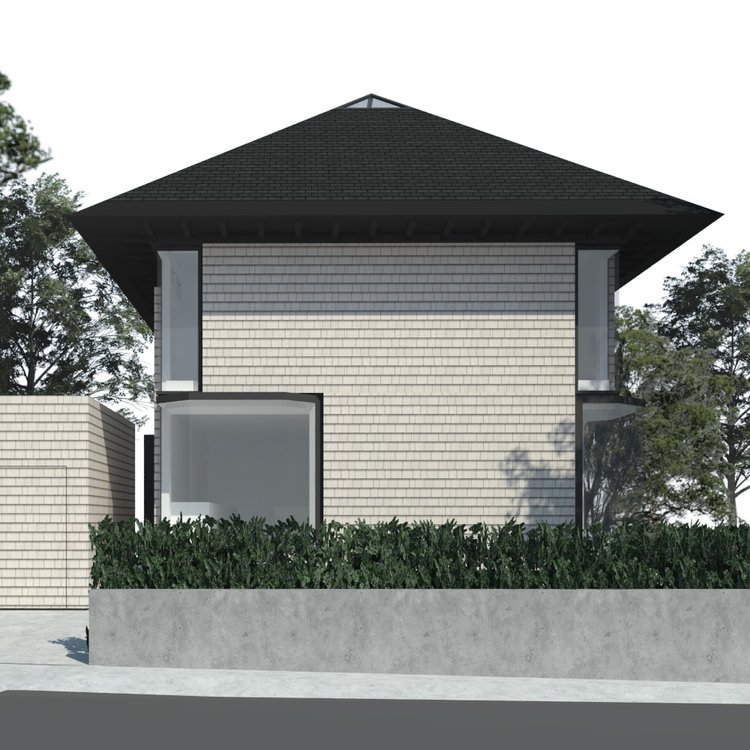
#2384

Posted 05 June 2020 - 08:42 AM
It’s a good thing non-award winning architects are still allowed an opinion!
The Darcy Jones interiors are impressive, I do like the mid-century vibes in some of the projects, but again the focus in internal and interior. That’s nice, but it's a fail when the exterior detracts from a walkable, safe, eyes on the street pedestrian realm where people can connect with and get to know their neighbours. Nothing good can come from designs that directly counter that. Some of these designs give off a upscale housing projects vibe. Can’t imagine a whole block full of these.As I mentioned on another thread, a far more famous architect was behind the Tyee Co-op, but that thing is a blight on the city and hopefully get’s destroyed before it gains heritage status.From Darcy Jones’ site, examples of bad residential housing (on a remote island or mountaintop.. sure these would be fine):
Zoomer, we agree, you are entitled to an opinion. Unfortunately, you cross that threshold the moment you say definitive statements like "nothing good can come from...", you are now acting like the gatekeeper of architecture, well urban design specifically. Unfortunately again, you are espousing a limp, North American design vocabulary where planners and citizens are terrified of any building with a blank wall or an entry moment that doesn't have a dormer or front stoop to "orient to the street". It is rooted in an American attempt at greenwashing auto centric dendritic land use patterns and calling it new-urbanism with no regard for the finer architecture details or nuances of a city pattern. Any city that is known for architecture, is a balance of eclectic design that feeds informal interactions on the street and public spaces rather than relying on a dormer. Victoria is known for fine-grain architecture, we are breaking away from it. And so far, every ADP vote on a D'Arcy Jones design has been one of unanimous support...
Your remarks about the Tyee Road Co-Op is way off, that project by Arthur Erickson is brilliant, it is not long for this world because of deferred maintenance, not poor design.
Drop the Andres Duany books and pick up Pattern Language, or head to Royal Bay, they have dormers on dormers, you'll love it there ![]()
- m3m and max.bravo like this
#2385

Posted 05 June 2020 - 09:03 AM
I actually really like the design of the first house posted above, but yeah, the big blank walls on many Aryze projects can make them feel a bit unwelcoming and fortress-like to me. I'm excited to see Aryze's take on an office tower as their designs are usually very unique, but please for the love of god, no big blank walls, especially at ground level!
#2386

Posted 05 June 2020 - 10:46 AM
I actually really like the design of the first house posted above, but yeah, the big blank walls on many Aryze projects can make them feel a bit unwelcoming and fortress-like to me. I'm excited to see Aryze's take on an office tower as their designs are usually very unique, but please for the love of god, no big blank walls, especially at ground level!
deal ![]()
- Brantastic likes this
#2387

Posted 05 June 2020 - 10:50 AM
Under the new Step Code it must be 24" x 24" vinyl triple-glazed windows and vinyl siding.
#2388

Posted 05 June 2020 - 05:48 PM
Zoomer, we agree, you are entitled to an opinion. Unfortunately, you cross that threshold the moment you say definitive statements like "nothing good can come from...", you are now acting like the gatekeeper of architecture, well urban design specifically. Unfortunately again, you are espousing a limp, North American design vocabulary where planners and citizens are terrified of any building with a blank wall or an entry moment that doesn't have a dormer or front stoop to "orient to the street". It is rooted in an American attempt at greenwashing auto centric dendritic land use patterns and calling it new-urbanism with no regard for the finer architecture details or nuances of a city pattern. Any city that is known for architecture, is a balance of eclectic design that feeds informal interactions on the street and public spaces rather than relying on a dormer. Victoria is known for fine-grain architecture, we are breaking away from it. And so far, every ADP vote on a D'Arcy Jones design has been one of unanimous support...
Your remarks about the Tyee Road Co-Op is way off, that project by Arthur Erickson is brilliant, it is not long for this world because of deferred maintenance, not poor design.
Drop the Andres Duany books and pick up Pattern Language, or head to Royal Bay, they have dormers on dormers, you'll love it there
So there are only two types of housing architecture - the style you like and Royal Bay? I think it's fair to say that there is a near infinite amount of innovative residential styles. Tell me what good comes from the bunker style you prefer? You can say variety, fine, but you can still have charred wood, corrugated iron, concrete walls, etc, etc. in a way that doesn't create a dead zone on the street. These homes may offer privacy for the home owner, but can result in less security as no one can see what's going on outside. It's a prime target for fences being tagged with graffiti, people poking around the house looking for loose items to steal, lack of community, home owners being unaware of how fast and unsafe the traffic is in their neighbourhood. Can you imagine a full residential block filled with homes like that? At least the dead zone of Uplands have some nice lawns to look at. Seriously though - "what social good comes from this housing style"? I could care less is someone builds a house like outside of a residential neighbourhood, and to be honest, I do like the look of some of these designs, but it should not be art for the sake of art - that's pretentious, selfish and detrimental to the community. Sure I'm pushing this argument way too far - I do like brilliant and disruptive architecture, except when it turn its back to the street. But go ahead, build it, I would never write to the city and try to quash a proposal or protest against it, but I won't have much sympathy for the result, when a so called brilliant design like Tyee becomes a dilapidated deadline eyesore that no one cares about.
#2389

Posted 09 June 2020 - 10:37 AM
So there are only two types of housing architecture - the style you like and Royal Bay? I think it's fair to say that there is a near infinite amount of innovative residential styles. Tell me what good comes from the bunker style you prefer? You can say variety, fine, but you can still have charred wood, corrugated iron, concrete walls, etc, etc. in a way that doesn't create a dead zone on the street. These homes may offer privacy for the home owner, but can result in less security as no one can see what's going on outside. It's a prime target for fences being tagged with graffiti, people poking around the house looking for loose items to steal, lack of community, home owners being unaware of how fast and unsafe the traffic is in their neighbourhood. Can you imagine a full residential block filled with homes like that? At least the dead zone of Uplands have some nice lawns to look at. Seriously though - "what social good comes from this housing style"? I could care less is someone builds a house like outside of a residential neighbourhood, and to be honest, I do like the look of some of these designs, but it should not be art for the sake of art - that's pretentious, selfish and detrimental to the community. Sure I'm pushing this argument way too far - I do like brilliant and disruptive architecture, except when it turn its back to the street. But go ahead, build it, I would never write to the city and try to quash a proposal or protest against it, but I won't have much sympathy for the result, when a so called brilliant design like Tyee becomes a dilapidated deadline eyesore that no one cares about.
Please attempt to describe architecture without using the phrases: orientation to the street , relationship to the street, eyes on the street, activation of the street, dead zone on the street
#2390

Posted 09 June 2020 - 10:47 AM
In the first example posted in #2383 (contemporary wood house beside the blue craftsman house), doesn't the modern house have nearly identical size and number of windows looking at the street? By my rough approximation, it sure looks about the same... I fail to see how that one contributes to creating a dead zone....
zoomer, I have to say I admire your dedication to your cause. Also, i'm not a fan of your new bedroom wall colour. All us neighbours agree it looked better before. But tell your wife her new pajama set looks lovely and comfortable. Where did she get it?
#2391

Posted 09 June 2020 - 02:34 PM
Please attempt to describe architecture without using the phrases: orientation to the street , relationship to the street, eyes on the street, activation of the street, dead zone on the street
It appears we are talking past one another, so I'll give it one more shot. You did however identify the key point - I don't care about the architectural style, that has nothing to do with my argument. There are an infinite number of ways that a building can be bold, beautiful, innovative - and yet not be detrimental to the neighbourhood. You did not answer my question - ""what social good comes from this housing style?" I assume you take that into consideration, the impact the building will have on its environment? Although I'm starting to think it's just a case of art for art's sake, and there is no other consideration?
This 2017 BBC article highlights some of my key point; here's a few key quotes:
"We now know, for example, that buildings and cities can affect our mood and well-being, and that specialised cells in the hippocampal region of our brains are attuned to the geometry and arrangement of the spaces we inhabit. Yet urban architects have often paid scant attention to the potential cognitive effects of their creations on a city’s inhabitants. The imperative to design something unique and individual tends to override considerations of how it might shape the behaviours of those who will live with it. That could be about to change. “There are some really good [evidence-based] guidelines out there” on how to design user-friendly buildings, says Ruth Dalton, who studies both architecture and cognitive science at Northumbria University in Newcastle. “A lot of architects choose to ignore them. Why is that?”
"Today, thanks to psychological studies, we have a much better idea of the kind of urban environments that people like or find stimulating. Some of these studies have attempted to measure subjects’ physiological responses in situ, using wearable devices such as bracelets that monitor skin conductance (a marker of physiological arousal), smartphone apps that ask subjects about their emotional state, and electroencephalogram (EEG) headsets that measure brain activity relating to mental states and mood."
"One of Ellard’s most consistent findings is that people are strongly affected by building façades. If the façade is complex and interesting, it affects people in a positive way; negatively if it is simple and monotonous. For example, when he walked a group of subjects past the long, smoked-glass frontage of a Whole Foods store in Lower Manhattan, their arousal and mood states took a dive, according to the wristband readings and on-the-spot emotion surveys. They also quickened their pace as if to hurry out of the dead zone. They picked up considerably when they reached a stretch of restaurants and stores, where (not surprisingly) they reported feeling a lot more lively and engaged." The writer and urban specialist Charles Montgomery, who collaborated with Ellard on his Manhattan study, has said this points to “an emerging disaster in street psychology”. In his book Happy City, he warns: “As suburban retailers begin to colonise central cities, block after block of bric-a-brac and mom-and-pop-scale buildings and shops are being replaced by blank, cold spaces that effectively bleach street edges of conviviality.”
"Social isolation is now recognised by urban authorities as a major risk factor for many illnesses. Is it possible to design against it, to build in a way that encourages connection?"
Fundamentally that's my problem with your work, it does not encourage connection and ultimately is bad for the neighbourhood. I really don't see this perspective as controversial at all, it's widely known and documented - shouldn't we avoid the mistakes of the past?
Another interesting article from the Globe and Mail, although overly bold in it's key point on how Bjarke Ingels really sucked at the 'meet the street' until Brent Toderian set him straight and he redeemed himself in Toderian's backyard with Vancouver House.
#2392

Posted 09 June 2020 - 03:20 PM
"Fundamentally that's my problem with your work, it does not encourage connection and ultimately is bad for the neighbourhood."
Wow, that is a bold, subjective statement.
What is missing from this dialogue is your complete disregard for the multiple dimensions of architecture. There is the value if self-expression, honesty of design, minimalism and/or organic design, and then design vernacular that references tradition or modernism. You are stuck on one element of design, public good. Society is way to pluralistic for a singular public good which renders your position, well, just your position. By your definition, Daniel Libeskind has no community value. Libeskind's style of deconstructive architecture was purposely void of harmony, continuity, or symmetry....the things you probably think make up the public good. His architecture was an expression of trauma whether the erosion of one man to the war time extermination of a cultural group. It spoke to history, without a dormer, through extreme, pure expression.
To wrap this up, you can fix this by stating: "In my opinion your work does not encourage connection and ultimately is bad for the neighbourhood."
The moment you try to bend architecture to your singular personal tastes, you've lost me.
#2393

Posted 09 June 2020 - 03:29 PM
I think zoomer's referring to things like the stoops and verandas, that transitional interface between the house and he sidewalk.
Some of those house designs I really like. First class stuff. But some of them remind me of those pumping stations scattered around the CRD designed to look like houses but there's no front door.
In general, I like their designs a whole lot more than the usual arts-n-crafts-lite crap that's thrown up in every cheap subdivision today.
#2394

Posted 09 June 2020 - 04:27 PM
In my view, Art for Art's sake (and by extension architecture for architecture's sake) is not detrimental to the community as zoomer seems to suggest. Such expression should be encouraged. Art and architectural expression have intrinsic value.
Too often, buildings are maligned because they don't fit some new urbanist ideal. Somehow all of north america has seemed to accept new urbanism as the "way things should be" which in my view risks that neighbourhoods will turn into the exact cookie-cutter suburbia the movement hopes to avoid (can you imagine an entire neighbourhood of Abstract's lowrises? *blah*). There's nothing about any of Aryze's designs posted above that prevent a neighbourhood from being a "people place".
- RFS likes this
#2395

Posted 09 June 2020 - 04:33 PM
#2396

Posted 09 June 2020 - 05:11 PM
"Fundamentally that's my problem with your work, it does not encourage connection and ultimately is bad for the neighbourhood."
Wow, that is a bold, subjective statement.
What is missing from this dialogue is your complete disregard for the multiple dimensions of architecture. There is the value if self-expression, honesty of design, minimalism and/or organic design, and then design vernacular that references tradition or modernism. You are stuck on one element of design, public good. Society is way to pluralistic for a singular public good which renders your position, well, just your position. By your definition, Daniel Libeskind has no community value. Libeskind's style of deconstructive architecture was purposely void of harmony, continuity, or symmetry....the things you probably think make up the public good. His architecture was an expression of trauma whether the erosion of one man to the war time extermination of a cultural group. It spoke to history, without a dormer, through extreme, pure expression.
To wrap this up, you can fix this by stating: "In my opinion your work does not encourage connection and ultimately is bad for the neighbourhood."
The moment you try to bend architecture to your singular personal tastes, you've lost me.
I don’t think I need to ‘fix’ anything - of course it’s just my opinion, it’s why the name at that top of the post says “Zoomer” and not “Universal Truth”. Beyond gravity and the speed of light isn’t it all opinion, lol. I quoted some other sources to back my opinion, as others could do the same to counter those points.
My points are regarding residential architecture, in particular single family or very small scale projects such as the ones Azyre works on so I’m not sure how the reference to Daniel Libeskind is relevant. Many of his projects, in particular the museums are destinations in themselves - where people go to gather and be part of a community...
For those who’ve read above, I’ve also said that I like some of those designs and they would be fine outside of a residential setting, in a more secluded setting.
Yes, there is far more to architecture than public good, but if it fails that, then it’s a failure overall and art for arts sake. Of course what is public good is a matter of opinion in case folks aren’t clear on that.
Are there examples of neighbourhoods or even a block’s worth of buildings that are totally inward facing and yet still “successful” (whatever that means). Is this the exception to the rule? If so, why do they work?
#2397

Posted 15 June 2020 - 02:22 PM
https://www.gofundme...AgSM9stRuG_hFB8
Groundhog Day for Aryze for this project: https://www.talktoaryze.ca/902foulbay
#2398

Posted 15 June 2020 - 06:02 PM
Know it all.
Citified.ca is Victoria's most comprehensive research resource for new-build homes and commercial spaces.
Use the page links at the lower-left to go to the next page to read additional posts.
0 user(s) are reading this topic
0 members, 0 guests, 0 anonymous users








